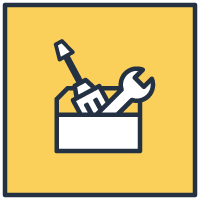Early Identification and Referral Toolbox
Experiences that occur during the earliest years of life have a profound influence on a child's ability to learn, move, and interact with others. This is especially true for children with deaf-blindness for whom physical, communication, cognitive, social, and emotional developmental domains are deeply intertwined. Because the impact on learning is exponentially greater for combined vision and hearing loss than for vision or hearing loss alone, early intervention services from individuals who understand the unique impact of deaf-blindness is essential.
A key responsibility of state deaf-blind projects (SDBPs) is to work with state systems and local community agencies to help them identify—and refer to the SDBP—children who are deaf-blind as early as possible, ideally during infancy. SDBPs can help link infants and toddlers with or at risk for deaf-blindness to appropriate evaluation and early intervention services and provide resources and support to their EI providers and families.
This guide provides suggestions and resources to help state deaf-blind projects improve early identification and referral (EI&R). It’s organized by the three service systems most likely to be important partners:
- Part C
- Early Hearing Detection and Intervention Programs (EHDI)
- Health Care System
Most state projects will use the guide after completing the Early Identification and Referral Self-Assessment Guide (SAG) and its associated action plan. It would be good to review those materials before you get started.
You may have already identified the system that is most important to target in your state or you may feel that you need to spend more time gathering additional information and planning. If so, another resource that will be useful to you is Changing Systems: Moving Beyond Child-Specific Technical Assistance for guidance. In either case, if you need assistance or simply want to discuss your ideas with someone, contact Emma Nelson.
Published 2019 by National Center on Deaf-Blindness
